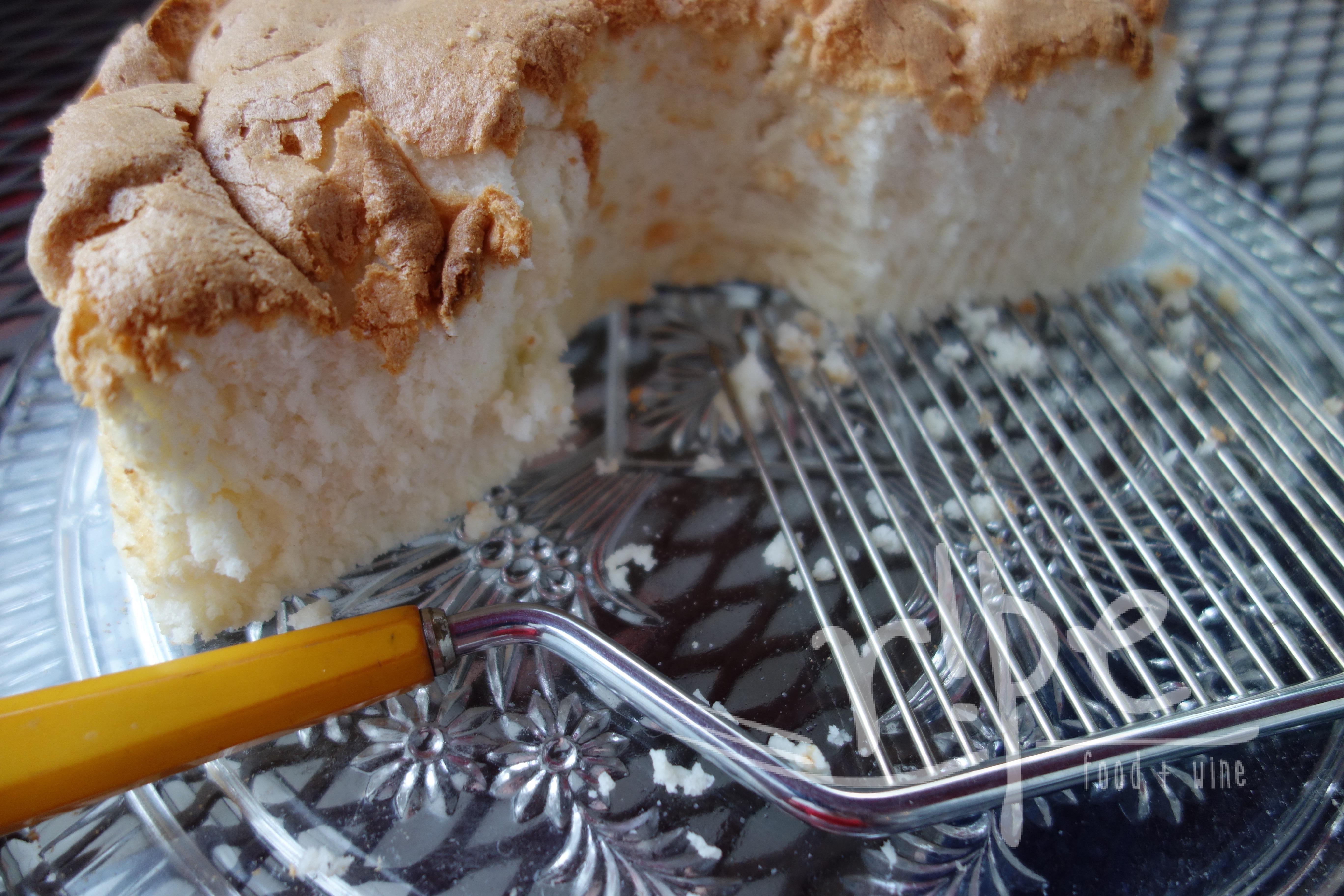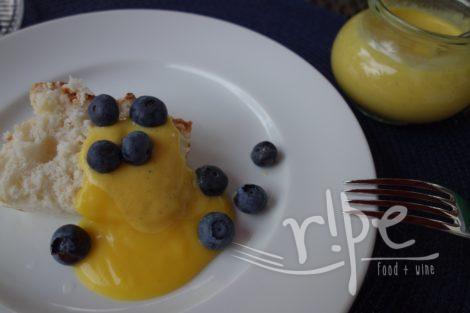One kitchen tool Williams-Sonoma has yet to color-coordinate and over-market: angel food cake slicer! Mine is a treasure, from the 1930’s with a bakelite handle. Get yours on eBay before they are gone forever.
Now for the cake. From the best, Flo Braker. Moist and fluffy, best served plain with an assortment of toppings for each person to add as they wish: lemon curd, berries, nectarine slices, crème anglaise, chocolate ganache…you wouldn’t go wrong with some of each.
Back in 2001, sixty of us from the San Francisco Baker’s Dozen lined up sixty angel food cakes for a Gourmet magazine shoot. No two looked alike, although each of us followed the same recipe, “Flo’s Angel Food Cake”, about to be published in our book, The Baker’s Dozen Cookbook. Humbling. But baking often is. Beyond following a recipe lie additional variables: your oven, your pan, specific ingredients, the weather, even where you are on the globe. I’ve adjusted the original for high-altitude by decreasing the confectioners’ sugar by 2 tablespoons. If you’re at sea level, add back 2 tablespoons sifted confectioners sugar (20 grams) and you’re good to go.
High-Altitude Angel Food Cake
adapted from Flo Braker and The Baker's Dozen Cookbook
Ingredients
- 1 ½ cups egg whites from fresh eggs from 10–12 eggs
- 1 ½ cup less 2 tablespoons sifted confectioners' sugar 130 grams; if you're sea level, stick with 1 ½ cups confectioners' sugar, 150 grams
- 1 cup sifted cake flour 100 grams
- ¼ teaspoon Kosher salt
- 1 ½ teaspoons cream of tartar
- 1 cup granulated sugar 200 grams
- 1 teaspoon vanilla extract
Instructions
-
About 1 hour before baking the cake, place the cold egg whites in the bowl of an electric mixer, this will bring their temperature up near room temperature.
-
Preheat oven to 350° F with the rack positioned just below center. Have your 10-inch tube pan (ungreased and without a nonstick surface) with removable bottom at the ready.
-
Sift the confectioners' sugar and cake flour onto a piece of waxed paper. Sprinkle on the salt.
-
Using a whisk attachment, whip the egg whites on low until foamy. Add the cream of tartar and increase speed to medium. Whip just until soft peaks form. Continue whipping and gradually add the granulated sugar in a steady stream, until the whites thicken and form soft, droopy peaks. Add the vanilla in the last moments of whipping.
-
Sprinkle one-quarter of the sifted flour+sugar over the whites and fold together using a rubber spatula. Repeat with the remaining sifted flour+sugar, folding in only one-quarter at a time. Gently pour the batter into the tube pan. Bake until top is golden and springs back when you press it with your finger, and a toothpick inserted in the center comes out clean, about 45 minutes (note as of February 2023: my gas oven is taking longer, about 50–55 minutes; next time I will check cake temperature, you want 206° per Serious Eats). Immediately after removing from the oven, invert the cake pan onto the neck of a bottle or funnel. Cool completely in the pan, 2–3 hours.
-
To remove the cake from the pan, slip a flexible metal spatula or butter knife carefully along the side perimeter of the pan. When the sides are free, push up on the removable bottom to remove the outer pan. Slide your spatula or knife along the bottom of the cake to free it from the tube base, then cover the cake with a cooling rack, invert the cake, and it should fall free from the bottom of the pan. Cover the cake with your serving plate and invert again to get the baked top on top (as photo), it's a personal preference thing. Let cool completely. To serve, slice with an angel food cake slicer or serrated knife.




